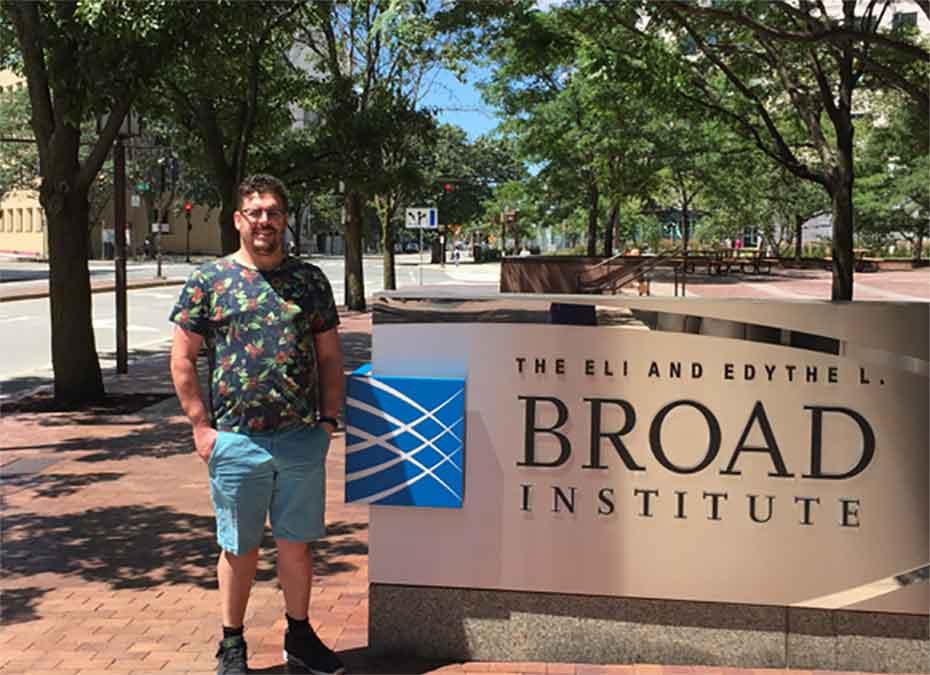Travel Story: Dr Jimmy Breen
Dr Jimmy Breen from the Robinson Research Institute’s Bioinformatics Core Facility attended BioC2017 and the Bioconductor Developer Day in Boston, USA and the Human Placenta Project Meeting at the USA National Institute of Health Headquarters in Bethesda, Maryland in July.

Jimmy presented his work, msgbsR: an R package for analysing methylation-sensitive genotyping-by-sequencing data at BioC2017.
This is what Jimmy had to say about his experience in the USA.
What was a highlight of the conference?
The four keynote presentations on the topic of single-cell transcriptomics and distinguishing the profile of specific cell-types through hierarchical clustering of single-cell data from major presenters Elham Azizi (Memorial Sloan Kettering, New York), Davis McCarthy (EMBL EBI, Cambridge, UK), Christina Kendziorski (University of Wisconsin) and Rahul Satija (New York Genome Center, NYU).
Did you meet any researchers or collaborators of significance?
I met a number of quality researchers on this trip, especially in the area of placental biology. I did discuss Bioinformatics and statistical applications in placental research with Assistant Professor Marina Sirota from the University of California San Francisco, and discussed possible collaborations. Additionally, I met with Epigenomics and single-cell transcriptomics package developers such as Peter Hickey (Johns Hopkins University) and Davis McCarthy from EMBL EBI, UK.
How will the experience support you and your research going forward?
This travel grant helped my research by allowing me to engage with two communities (Placental Biology & Bioconductor) which I have not had much experience with previously. This has enabled me to form relationships with researchers in both areas and specifically help the Bioinformatics core-facility at the RRI to develop additional computational packages for genomics research.
What was the most exciting thing you learned/experienced at the Conference?
The new statistical approaches to analyse “big data” was incredible valuable. For example, with new HDF5 array types within R, I am now able to analyse a whole transcriptomics project without using high-performance computing. This enables students and senior Bioinformaticians at the Bioinformatics Hub and RRI to complete projects on their laptop using RStudio.
What was the most interesting or unexpected moment of your travel?
I had never travelled to the Deep South or the north east of the USA, and I found the people to be warm and positive in both places. The food was amazing, and I was very impressed by the level of research that was happening in Boston. This city lives and breathes genomic research.
